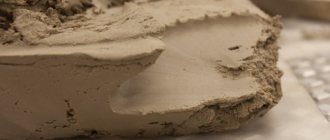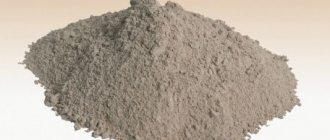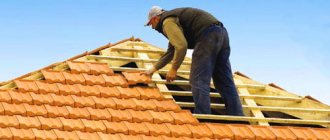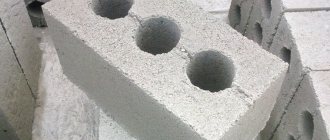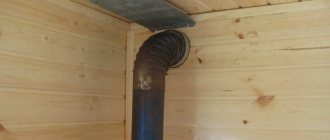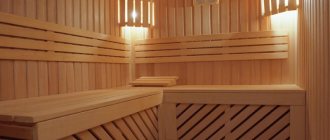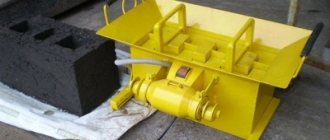Clay is a natural material formed through natural gravity; its characteristics depend on the components included in its composition. For the construction of objects that are operated under the influence of strong heat and open flame, a special type of this material is chosen. Fireclay is also called fireclay. To produce it, zircon or corundum silicate or alumina are used. The raw materials are placed in a drum or oven and fired at a temperature of +1500 degrees C. This way, water and impurities are evaporated, and the material is sintered into crumbs, the diameter of which varies from 0.5 to 2.5 mm. This technology creates high heat-resistant and fire-resistant qualities of fireclay.
Important! There are several types of fireclay. The quality of a particular material depends on the raw materials, firing technology, and additives. Some types of fireclay are used for the production of bricks, others are used to prepare plaster solutions for heating appliances, and others are used for sculpting and casting sculptures and dishes.
Advantages of refractory
Heat-resistant, fire-resistant fireclay clay has been known to man for several thousand years. Since then, its scope has changed little. Among other natural materials with the same properties, this refractory was chosen due to the following advantages:
- coatings and products made from it do not collapse, do not crack, retain their original shape, and are characterized by a long service life;
- environmentally friendly natural sedimentary rock does not harm human health and the environment;
- clay has high adhesive qualities, it adheres perfectly to metal, stone, brick and other surfaces;
- products and coatings are able to withstand heat stably and for a long time;
- the material is vapor permeable.
Varieties
Disadvantages of refractory
Like any material, refractory clay has not only advantages, but also disadvantages:
- the material has a high price;
- The preparation of the solution is carried out strictly according to technology.
On a note! In large chain construction stores, such as Leroy Merlin or Your House, you can purchase fireclay clay at a more affordable price. There it is usually sold in 20 kg bags. The second option to save on the purchase of raw materials is to contact the sales department of the building material manufacturer itself. Also, the cost will be significantly lower when purchasing a large batch in bulk.
Origin of clay
Before starting the conversation, I would like to define the breed. What is clay? It is a sedimentary fine-grained rock that has a dust-like structure when dry and plastic when moistened.
It is formed as a result of the destruction of rocks, for example, during the process of weathering. The main source of clay layers is feldspars. It is when they are destroyed under the influence of atmospheric reagents that clay minerals are formed. Sometimes strata are formed through the process of accumulation. But more often this occurs as a result of sediment from water flows. Then accumulations of clay form on the bottom of seas and lakes.
Composition of fireclay refractory
In stores, fireclay is sold as a dry mixture in bags. It is produced from raw materials with a high content of highly dispersed hydroaluminosilicates. In addition to these components, refractory clay contains:
- Na sodium;
- Ca calcium oxides;
- K potassium;
- Fe iron;
- Mg magnesium;
- aluminum oxides and other components depending on the type of raw material.
When purchasing, you need to pay attention not only to the composition, but also to the expiration date. Kaolin, which is part of the building material, loses its properties over time. Expired goods cannot be used.
Attention! When choosing refractory clay for work, pay attention to mortar. This is a combination of numbers in the marking. The higher the values, the more pronounced the fireproof qualities of the materials are. Other symbols and letters may vary. As a rule, the instructions on the packaging indicate the scope of application, down to the type of bricks that can be laid.
The composition and instructions for use are printed on the packaging
Use Cases
Kaolin can be used for furnace masonry. It is also used as plaster and for making decorative items. This is interesting: other types of non-combustible finishing materials.
In addition to being used for decorative purposes, chamotte clay is actively used when laying stoves and fireplaces. When building stoves, look at the markings applied to the surface of the products. Usually the letter "Ш" is indicated. The material most often used is for masonry of the firebox, since its cost is high, so it is impractical to use it for the rest of the work. They lay it on special clay. Its characteristics are the same as those of brick.
For use in plaster, large and medium spatulas are used. It is necessary to apply the material in a layer of no more than 2 mm. As soon as it dries, you can begin finishing work.
Fireclay fireclay has a unique texture and composition. That is why designers paid attention to it and began to use it to produce unique blanks. These can be ceramic dishes, original figurines. To ensure greater plasticity, various impurities are added. The finished products look beautiful, and they are absolutely safe. Most often, fireclay chips are used as additives in the production of decorative objects. It is added to plastic clay.
Basic properties of fire-resistant building materials
When choosing a material for a specific job, you need to pay attention to its technical characteristics:
- grain sizes;
- firing temperature: at lower rates, fireclay absorbs up to 25% of moisture, at higher rates – up to 10%;
- humidity indicators, high-quality refractory should not contain more than 5%;
- temperature limit of the building material, the maximum limit is +1850 degrees C.
Note! To ensure that the dry mixture does not lose its technical characteristics, it must be stored under special conditions. The main danger to building materials is humid air. The second risk factor is long-term storage. Mostly, the shelf life of clay refractory is 36 months.
Fireplace made of fireclay bricks and fireproof clay mortar
Scope of application
Fireclay can be used alone or mixed into plaster solutions. Fireclay is not only thermally resistant, but has deep brown and brown shades and an impressive texture. Aesthetic qualities significantly expand the scope of application of the material:
- production of construction refractories;
- interior design using fireclay plaster;
- casting and sculpting of souvenirs, dishes, figurines;
- preparation of solutions for the construction of stoves and fireplaces;
- for the formation of heat-insulating screens.
For designers, sculptors, craftsmen, and decorators, refractory clay opens up endless possibilities. You can add various fillers and dyes to it. The plastic material can take on the most intricate shapes. The spectacular texture brings an element of uniqueness. In construction and renovation, fireclay is characterized by local use.
Important! The names of the material in the packaging may be different: VITEB, PGA, PHB. They are produced according to different specifications. It is important to carefully study the instructions themselves.
Decorating the walls of premises with fireclay plaster
Types of clay
Sedimentary clays are formed as a result of the transport of clay weathering products to a new place and settling there. Based on their origin, such rocks are divided into continental (formed on the mainland) and marine (formed on the seabed).
In turn, marine clays are divided into:
- Coastal-marine. They form in coastal regions, river deltas and bays. They are characterized by unsorted material. Very often such rocks are interbedded with siltstones, sandstone, and coal seams.
- Lagoon. Such clays are formed in sea lagoons (desalinated or with a high salt concentration). As a rule, the rocks contain iron sulfides and calcites. Among them there are fire-resistant types.
- Offshore. Such clays are formed at a depth of no more than 200 meters. They are more homogeneous in composition.
But among the clays of continental origin there are:
- Diluvial, which are characterized by a mixed composition and its sharp change.
- Ozernye. Such rocks contain all clay minerals. It is believed that the best types of fire-resistant species belong to lake clays.
- Proluvial. Such rocks are formed by temporary flows. They are characterized by poor sorting.
- River species can be found on the terraces of reservoirs, especially in the floodplain. Such rocks are poorly sorted and quickly turn into pebbles and sands.
In addition, residual clays are released. They are formed as a result of weathering of all kinds of rocks on sea or land. Usually they are not very flexible. Continental residual rocks include kaolins and other eluvial clays.
In Russia, the extraction of clay (ancient residual rocks) is quite common in Eastern and Western Siberia and the Urals.
The process of mixing the solution
Preparing mortars for laying stoves and fireplaces, and plaster for decorating premises is in many ways similar to mixing conventional compounds. Application to the surface is also carried out using the same tools, namely two spatulas: with one tool the solution is placed on the surface and leveled, with the other to remove smudges. Other recipes are used to produce building ceramics and modeling compounds. But the general principle is this:
- the contents of the package are poured into the container;
- the powder is filled with a certain amount of water;
- swelling of the powder continues for 3 days;
- on the 4th day water is added, in some cases sand, in others additives;
- the mixture is stirred until smooth.
Attention! No matter how homogeneous the material may be as a result, when performing work it must be constantly mixed, not allowing the components to be distributed according to density. The quality of work largely depends on this.
Mixing the solution
The difference between chamotte and ordinary ceramic bricks
Fireclay brick cannot be confused with any other block, even with other refractories. Mostly yellow or even light yellow in color, with a whitish tint. The main difference between fireclay bricks is the high content of aluminum oxide in various chemical forms and modifications.
In comparison with ceramic bricks, with a high content of iron oxide and silicon oxide, fireclay bricks have their own characteristics that affect their durability:
- The surface of the block is highly porous, but these pores are very small; the solution penetrates poorly into them, but moisture and air penetrate well;
- The coefficient of thermal expansion of each brick is strictly individual, which will require difficult and painstaking selection of the composition of the mortar for masonry;
- The refractoriness and ductility of fireclay bricks largely depends on the operating mode of the furnace, and not on the composition of the mortar or the method of laying.
Advice! For the lining of one furnace, you cannot use fireclay from different batches or a set of randomly selected bricks; in extreme cases, different types can be converted into broken or fireclay powder
.
Mortar for laying fireplaces and stoves
Before starting work, you need to decide which part of the heating device you will fold at one time. You need to cook a strictly defined portion. Calculations are made as follows. Each brick requires approximately 1 kilogram of mortar. Therefore, to lay 30 bricks you will need to mix the mixture from a standard 2 kg bag. If 1 cubic meter is used at a time, 5 packages will be required. The work is carried out according to a standard scheme using quartz sand. The proportion of clay and sand for a large oven is one to three, respectively, for a small hearth – one to two. If you are using a ready-made product from a store, quartz filler will not be required. Process Features:
- sand and clay or the finished product is poured into a container;
- water is also added there, it saturates the powder, when it is completely wet, another liquid is added, its surface should be at a distance of one phalanx of a finger from the wet mixture;
- the mixture settles for up to 3 days;
- on the 4th, stir the solution with a construction mixer until homemade sour cream becomes thick; if it is dry, add water; if liquid, add powder;
- Having achieved the desired density and uniformity, you can begin work.
The technology of laying on fireclay clay does not differ from the usual technique. Experienced masters of masonry heating devices recommend making seams no thicker than 1 centimeter. The structure must dry completely, this will last from 2 days depending on the temperature and humidity. Experienced craftsmen believe that a folded stove contains at least one barrel of water. To completely evaporate it, after the outer layer has dried, the device needs to be heated little by little 2 times a day with a small armful of firewood. In summer, this procedure lasts from 5 to 10 days, in winter – up to three weeks. Until the stove is completely dry, you cannot heat it to heat the premises. It is also worth understanding that heating structures are not only a source of comfort in the home, but also danger. If the master is not confident in his knowledge, it is better to use the services of professionals.
Construction of furnaces
A good way to lay fireclay on solutions of different recipes
The method is not very popular among professional stove makers; many criticize it for being excessive, unnecessary complexity and labor-intensive, but for an amateur it is often the only way to compensate for masonry errors.
Fireclay is a good thermal insulator, a very hard and stressed brick, it can successfully withstand high temperatures for a long time. But under one condition - gradual heating and cooling, thereby reducing the destructive effect of internal stresses. But in practice this is only possible for industrial furnaces.
The essence of the method is that the choice of which mixture the fireclay is placed on is determined by its location in the furnace. It is better to use different mortar formulations for the tray, side walls and roof of the firebox. This is inconvenient and will take three times longer to complete the job, but it gives good results. If you put everything on the same mortar composition, most likely, in a year you will have to reposition the firebox vault or the brick laying belt next to the ash pit.
In a home stove, you can extend the life of fireclay by varying the thickness of the bond seam and the composition of the masonry mortar. If the stove is designed for firewood, for example, for a small country house, the fireclay can be combined with one composition with 10% clay content and replace 15% of the sand with fine fireclay powder.
In the mortar for laying bricks in a bathhouse, used for laying rows under the heater and heating the steam room, it is better to reduce the fireclay content to a minimum and double the clay content, laying the fireclay “on the end” with dressing with ceramic bricks on clay mortar.
The procedure for preparing chamotte plaster for finishing and decoration
The plaster is prepared a little differently:
- refractory and sand are poured into the container in a ratio of two to seven, respectively, only fine-grained sand is used, the proportion is strictly maintained, otherwise there is a risk of cracking;
- the powder is poured with water and left for three days;
- Portland cement is poured into the swollen solution in a proportion of one to two parts of clay;
- stir the material with a construction mixer.
It is important to use the entire volume of plaster within the shortest possible time. Further, the solution loses its technological qualities. If work is planned for several days in a row, then a new portion of plaster is prepared every day. In addition to the above ingredients, you can use others:
- the addition of PVA glue will ensure eradicated drying; under natural conditions, the finishing layer based on fireclay releases moisture within two days;
- liquid fiberglass will provide additional plasticity to the mass and strength;
- Rock salt will add strength and speed up drying.
Interior decoration with fireclay refractory in retro style
The nuances of obtaining a production license
Legislation regulates the extraction of minerals, including clay. A license for the use of subsoil is a necessary condition for the extraction of rock in industrial quantities.
It is worth noting that a license is not needed if mining is carried out by persons who are not on the state balance sheet, without blasting, at a depth of no more than five meters. Without a license, for example, summer residents can mine clay on their own plots.
To obtain a license for clay extraction, contact specialists
For the licensing procedure to be successful, it is best to contact specialists in this field. To obtain permission to use natural subsoil, you need to have certain knowledge and considerable experience in this field, otherwise there is a risk that the package of documents will be returned to the applicant.
How to obtain a clay mining license:
- First of all, you need to decide on the site;
- Prepare a package of documents that reflect the financial condition of the company;
- Pay state taxes;
- Participate in auctions.
- Having received a license, you need to develop, coordinate and approve a project for the development of clay deposits.
Mortar for designer ceramics
The production of ceramics from refractory clay can be done in two ways: with firing and without this process. But work begins with preparing the solution:
- fireclay and ordinary clay are placed in the container in a ratio of six to four, respectively;
- materials are filled with water and left for several days;
- the solution is thoroughly mixed with a mixer to a thick consistency - for castings;
- the material is poured into molds and dries for several days, depending on the size and geometry; PVA glue can be used to speed it up;
- the frozen mass is removed from the mold and modified according to the design.
For sculpture, a mixture of a thicker consistency is mixed so that it can be fixed to the frame. Adding liquid glass at 3% of the total volume will simplify the work. If firing is planned, it is performed no less than two days after finishing decoration. The temperature should not exceed +1320 degrees C, after which the melting stage begins.
Garden decor made of fireproof clay
The procedure for preparing a clay solution for work can be seen in this video:
Self-cooking method
As a masonry mortar I use fireclay clay with the addition of cement.
To make decorative items at home, you don’t need to use refractory clay. In most cases, another material that will be just as flexible and durable will be perfect. But before you make polymer clay, which is what we are talking about, you need to prepare the following ingredients:
- PVA glue;
- Starch (you can use potato or corn);
- Vaseline or hand cream;
- Baby oil.
The composition is quite simple, since almost all the elements can be found in any home. You will also need a container of the required size and a plastic spatula, which will be used for mixing.
Bottom of the firebox, grate installed in place
Starch, petroleum jelly and PVA are placed in a container and mixed thoroughly. When the mixture becomes homogeneous, add two tablespoons of oil and mix thoroughly again. After this, the resulting solution must be placed in the microwave for exactly one minute. Then you need to mix the polymer clay again. Next, the surface of the table needs to be lubricated with a cream that does not contain silicone. Place the resulting mass on it and soften it with your hands. After some time, you should get a dough that has the properties of polymer clay. If you do not need to use it right away, the mixture can be wrapped in plastic and stored in the refrigerator.
